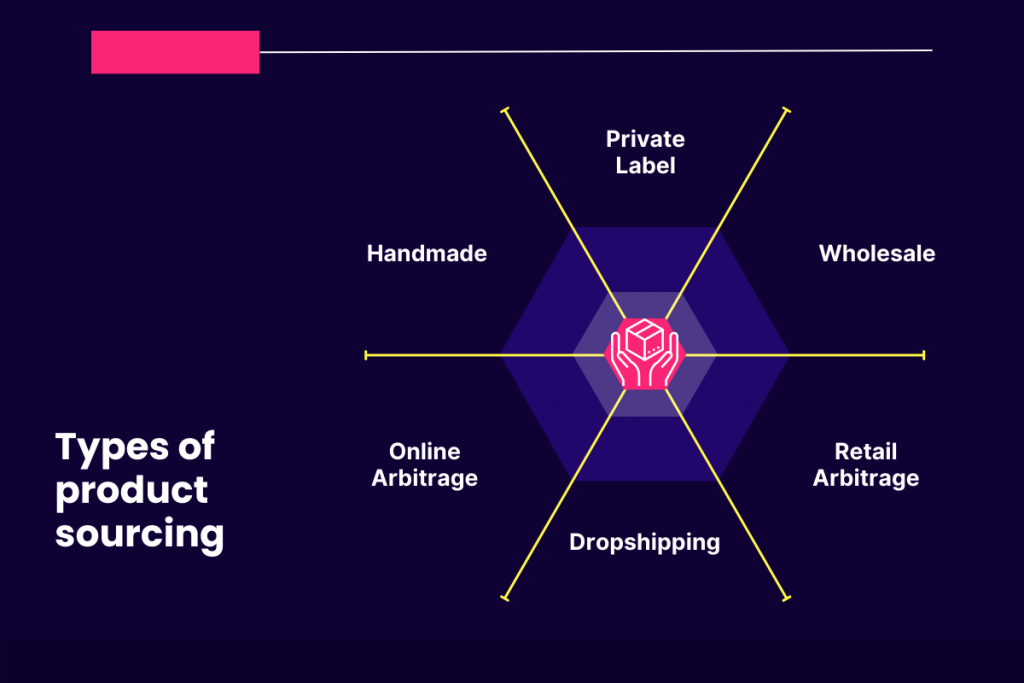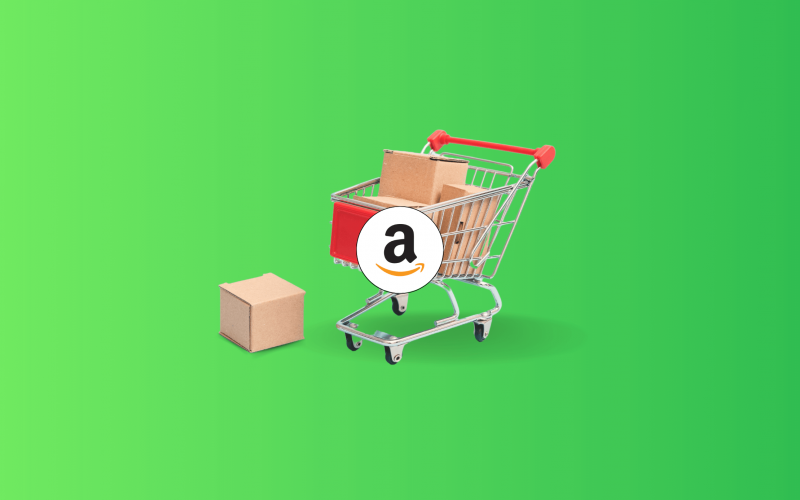Amazon is a marketplace that provides you with many options both as a buyer and as a seller. Being an Amazon merchant, you want to be sure that you know the best ways to navigate Amazon FBA and sell products that’ll make your business thrive.
How to best tailor your Amazon FBA program? What are the best products to sell on Amazon FBA? And for those new to the topic, what is Amazon FBA in the first place?
These and many more questions will be answered in this article, so let’s start.
Contents:
2. How to choose the best plan for my business on Amazon?
3. The best products to sell on Amazon FBA
4. Comparing Amazon with other ecommerce platforms and their top-selling items
5. Best products to sell on Amazon for beginners
6. Essential steps to find your best products to sell Amazon Marketplace
7. More great tips for Amazon sellers
8. How to source items: Where to get products to sell on Amazon
Amazon FBA vs. Amazon FBM
Sellers on Amazon have two options to choose from when it comes to managing their orders: Amazon FBA and Amazon FBM. Before we jump into more details, it’s important to note that you don’t need to choose one or the other, you can mix and match the FBA and FBM models the way you see fit.
Whichever business model you choose, remember to connect your accounting platform with the Amazon seller’s account (many world-famous marketplaces if you sell there too), and payment processors. Choose automation for ecommerce-tailored bookkeeping!
What is Amazon FBA?
FBA stands for Fulfillment by Amazon and relates to all the matters connected with fulfilling an order, such as storing, packing, and shipping things sold on Amazon as well as returns and exchanges. In essence, Amazon FBA deals with logistics and some key elements of customer care.
What is Amazon FBM?
FBM is short for Fulfillment by Merchant, so unlike in the FBA model, storing, packing, shipping of things you sell as well as returns and exchanges are done by you, the merchant.
How to choose the best plan for my business on Amazon?
While deciding on the appropriate model, FBA or FBM, for selling things on the Amazon marketplace, you need to take into account the following points.
Control of your business
Let’s start with the element of control. With Amazon FBM, you’re the one who governs the logistics and customer service, keeping with you all the tools. Any complaints are handled by you and/or your team alone, giving you the opportunity to tailor the communication to your brand standards. You can handle it the way you want to, which is a great benefit for sure. However, the flip side here is the amount of work that comes with it. And that’ll be compounded by the volume, which takes us to the next point.
Volume of your sales
If you have products in low volume, then fulfilling an order is certainly easier. But if you need large storage facilities for the products you sell on Amazon with huge amounts of products being shipped, it might be better to opt for FBA and let Amazon handle it for you.
Profit margins
Profit margins can be a determining factor when choosing between Amazon FBA and Amazon FBM. For products with low-profit margins, it’s more economical to handle that side of business on your own to save yourself as much money as you can. This points to the fact that having an FBM program is ideal for your low-profit margins goods while a good approach for high-margin products might be choosing FBA.
Packaging of things sold on Amazon
Lastly, the packaging itself should be considered. When you sell on Amazon with FBA, the packaging that your product is shipped in is standardized. You need to make sure that all products are packed and wrapped according to the Amazon FBA rules before they arrive at the fulfillment center. This Amazon shipment checklist can help you with this. So, if having unique and branded packaging of the products you sell on Amazon is an important element in your business model, then Amazon FBA might not be your best choice.
Takeaway
The takeaway from here is that the model that you choose for your order fulfillment is determined mostly by the characteristics of the products you sell. So choosing between Amazon FBA and Amazon FBM or mixing and matching them for different products is relatively easy if you know what to look for.
If you’re new to Amazon and would like to start an Amazon FBA business, we’ve compiled a guide with detailed steps, a business plan, a fee structure, and more for you to check.
The best products to sell on Amazon FBA
Now let’s turn to our main subject – the choice of products to sell on Amazon. It may sound like trying to find The Holy Grail as the world of commerce is changing fast and drastically at times. What might bring profit today, could as well become obsolete tomorrow. So the only way out here is to stay on top of it and research. So let’s look at some ideas for the best product for an Amazon FBA seller.
Amazon top selling items: A quick answer to what product categories to sell
Amazon itself gives a seller and a buyer some helpful tools to find hot products, in particular – Best Sellers and Movers and Shakers categories. Amazon’s Best sellers are relatively self-explanatory while Movers and Shakers refer to the highest gains in sales rank within the past 24h. So to find the top product in your chosen category, simply check those listings.
Speaking of top selling Amazon items, firstly, it’s a very time-sensitive thing, meaning that what sells well on Amazon in December might not generate revenue in January. For instance, when the holiday season is coming, the best products to sell on Amazon FBA during this time are gift boxes, Thanksgiving decorations, and Christmas decorations. Secondly, the main problem with those products is that you might hit an oversaturated Amazon market with a lot of competition. Moreover, the additional costs of advertising these top-selling items, in turn, will minimize the profit. If you decide to compete with lots of other businesses, you might want to make sure that your products are unique to stand the tough competition.
One has to bear in mind that top product categories mean the competition with Amazon and its Amazon Basics items, which are most likely cheaper and will be featured ahead of other products, even if they aren’t ranked as high. Hence, let’s look at some better ways to help your business thrive.
Top Amazon products to sell: The details
There are some ways to find information on the topic of the top-selling items. The tactics of product research might and should change over time as consumer tendencies are changing every day. Most likely there should be a combination of the following methods to help your business not only start successfully but keep making sale after sale. The main point is that this product research is far from being a one-day task. So let’s see how to go about it.
Amazon’s most popular product categories
To find products to sell on Amazon FBA, let’s look at the most popular categories among Amazon sellers. The basic law of microeconomics on the equilibrium of supply and demand should apply here. In other words, when there’s demand, there’ll be supply.
According to Jungle Scout’s 2022 State of the Amazon Seller Report, these are the top categories to sell on Amazon with the percentage of sellers who sell products in them.
Amazon product research
1. Home & Kitchen – 32%
2. Beauty & Personal Care – 23%
3. Toys & Games – 20%
4. Clothing, Shoes & Jewelry – 18%
5. Health, Household & Baby Care – 17%
6. Sports & Outdoors – 16%
7. Arts, Crafts & Sewing – 15%
8. Books – 15%
9. Kitchen & Dining – 14%
10. Baby – 14%
This list shows only the top 10 most-sold categories on Amazon. But we want to go further and look at how those categories correspond to the profit margins.
Product database: Popular products vs. profitable products
When you sell on Amazon or any other marketplace, finding top-selling products doesn’t yet mean becoming a successful business. The point here is that top-selling items aren’t necessarily the most profitable ones. If we turn to the finding of Jungle Scout on profit margins of the most popular categories of products, that’s what we’ll see:
Finding profitable product categories
| Product category | Profit margin | Rank in popularity |
| Handmade | 32% | 20 |
| CD & Vinyl | 27% | 26 |
| Apps & Games | 25% | 21 |
| Industrial & Scientific | 25% | 22 |
| Luggage & Travel Gear | 25% | 27 |
| Grocery & Gourmet Food | 23% | 16 |
| Video Games | 23% | 24 |
| Arts, Crafts & Sewing | 22% | 7 |
| Pet Supplies | 22% | 13 |
| Musical Instruments | 21% | 28 |
| Beauty & Personal Care | 21% | 2 |
| Baby | 21% | 10 |
| Sports & Outdoors | 21% | 6 |
| Automotive Parts & Accessories | 21% | 19 |
| Garden & Outdoor | 20% | 15 |
| Appliances | 20% | 17 |
| Toys & Games | 20% | 3 |
| Tools & Home Improvement | 20% | 12 |
| Clothing, Shoes & Jewelry | 20% | 4 |
| Books | 20% | 8 |
| Kitchen & Dining | 19% | 9 |
| Office Products | 19% | 14 |
| Electronics | 19% | 11 |
| Collectibles & Fine Art | 19% | 25 |
| Health, Household & Baby Care | 19% | 5 |
| Home & Kitchen | 19% | 1 |
| Cell Phones & Accessories | 18% | 18 |
| Computers | 16% | 23 |
The main takeaway here’s that profit margin is crucial when selling on Amazon. The best way to become a successful business is to find an Amazon product that’s high in demand and low in competition, which makes relying on popular categories alone unwise.
One has to consider the fact that some profitable categories of products selling on Amazon require specific experience and education. Musical instruments and automotive parts make a good example here. Some Amazon categories are oversaturated and demand a lot of marketing efforts. At the same time, the least popular product categories from the top 28 selling on Amazon are, in fact, the most profitable.
We have to say that when you sell on Amazon with a 16% profit margin (as Amazon’s categories at the end of the profit margin list), it might sound really good until you see a 25-32% profit margin with some categories at the top of the list. That’s twice the profit. The math speaks for itself here.
Comparing Amazon with other ecommerce platforms and their top-selling items
Another way to look for the best-selling products on Amazon is to use other ecommerce platforms like eBay, Shopify, Alibaba, Etsy, Walmart, and Facebook marketplace with their bestseller tabs to get an idea about the most popular items sold. It might help see the trends and to change and adjust your inventory when selling on Amazon.
While you check other marketplaces, you can consider venturing out to different platforms. To help you connect all your sales channels with different payment processors, check out Synder Sync.
As the world of ecommerce is evolving, many businesses diversify by selling on various platforms. According to Jungle Scout’s 2022 State of the Amazon Seller Report, the top 3 alternative ecommerce platforms for Amazon sellers are:
1. eBay – 28%
2. Shopify – 15%
3. Etsy – 13%
Best products to sell on Amazon for beginners
If you’re just about to dip your toes into the world of ecommerce, Amazon FBA in particular, know that some product ideas might be better suited to seasoned sellers as they require more experience. Hence, below we’ve compiled some advice on the types of products that are best suited for beginners on Amazon.
Low competition products
Niche products: Items that cater to a specific audience can often be lucrative. They may have less competition, making it easier for you to establish yourself.
Unique bundles: Combine related products to create a unique offering that isn’t readily available from other sellers.
Low investment cost
Small and light items: These can reduce your shipping and storage costs.
Generic products with high margin: Simple, unbranded items like phone cases, kitchen utensils, or simple clothing items like socks or hats, which can be sourced cheaply and sold with a good profit margin on Amazon.
Easy to source
Local products: If there’s a local product that isn’t readily available online, it could be a good opportunity to bring something new to Amazon’s marketplace.
Dropshipping products: If you can’t afford to hold inventory, you can use the dropshipping model to sell products.
High demand, low seasonality
Evergreen products: These are items that are always in demand, year-round.
Low seasonality items: Avoid products that are only in demand at specific times of the year unless you have a strategy to manage seasonality.
Essential steps to find your best products to sell Amazon Marketplace
If you’re looking to sell products on Amazon FBA, finding the best selling items can be the key to success. Here are some steps to help you find those top-selling items:
Step 1: Research your niche: The first step is to research your niche thoroughly. Look for products that fit your niche and have high sales potential. Use resources like free keyword tools and Amazon’s search bar to find keywords that are related to your niche.
Step 2: Use data to find the average price, search volume, and average BSR: Once you’ve found potential products in your niche, use data to analyze them. Look at the average price, search volume, and average BSR for these products. This will give you an idea of the price range, demand, and popularity of these products.
Step 3: Look at the number of days on the market: Next, look at how long the product has been on the market. If it’s been on the market for a while, it may have a lot of competition. However, if it’s a new product, it may have less competition, but also less data to analyze.
Step 4: Check the BSR: Check the product’s BSR, or Best Sellers Rank. This is an important indicator of how well the product is selling. The lower the BSR, the better.
Step 5: Find the price and sales data: Look at the price and sales data for the product. This will help you understand how much profit you can make from selling this product.
Step 6: Analyze the category and customer reviews: Check the category of the product and read through customer reviews. This will give you an idea of the product’s strengths and weaknesses, and how it fits into its category.
Step 7: Check the listing: Check the listing of the product. Look at the product images, description, and any other information that might help you understand why this product is selling well.
Step 8: Use email and database resources: Use email and database resources to get more information about the product. You can reach out to other sellers who are selling similar products to get their insights.
Step 9: Increase your research efforts: Increase your research efforts to find more products that fit your niche. The more data you have, the better decisions you can make.
Step 10: Check the sales data regularly: Check the sales data regularly to ensure that the product is still selling well. This will help you make adjustments to your pricing and marketing strategy if necessary.
However, the best products to sell on Amazon keep changing constantly, and are influenced by many factors. To stay on top of the competition, you need to research the trends, changing demands for products, and much more.
Below, we’ve compiled a list of more advanced tips to help you find best-selling Amazon products and grow your business on Amazon.
More great tips for Amazon sellers
If you’re looking for even more product ideas that help you sell efficiently on Amazon, read on.
Utilize software to find products to sell on Amazon
A very beneficial idea for selling on Amazon FBA is Amazon keyword research. You can do that with the tools that work specifically for Amazon, like AMZscout, Jungle Scout, or any other software you find useful. If you keep researching it regularly, you might discover a niche that’s trending locally or even globally.
You want to aim for items that a lot of people search for, but at the same time, not many sellers offer those products. In essence, look for low-competition keywords with high demand.
The second great thing about this technique of searching for best products is that such precise keywords usually have lower competition. Then go to each of those products and check how many of those are being sold right now on Amazon. This is a very simple check of high-demand products with the corresponding number of listings. Look for smaller numbers to find low-competition products.
Use Amazon keyword search to find good selling products
For Amazon FBA sellers, finding good products can be accomplished with the help of Amazon search itself. Just type in an item you’re interested in, without pressing ‘enter’, and look at what Amazon automatically fills in – these are called long-tail keywords. From those you can learn what products are popular right now, as the auto-complete feature gives you information about popular searches.
Monitor the wide context of the market conditions
Finding products that are high in demand but low in competition oftentimes could mean a profitable niche. It could also be a time-sensitive frame that’ll stay open only for a short period of time. Think of those buys influenced by an unexpected change in weather. The sellers that have stocked up those products will stay ahead of the competition but only for a little while until the rest catch up. Nevertheless, that could still mean great profit during that time.
Find good trends online
To find trending words, you can use various search tools like Trend Hunter or Google Trends. You can also find them on popular social platforms like Pinterest, Twitter, or YouTube. Review social media hashtags, influencers, and trending posts, keeping in mind the fact that social nets can turn into a very effective selling tool.
A very similar strategy is relying on trending news, which might give an idea of what items will be in demand. A good example may be the one with yoga mats in the last couple of years. People started spending more time at home working and realized the necessity of training to keep fit. As a result, the market for yoga mats is expected to reach $13.49 billion in 2025.
In a nutshell, whatever strategy or combination of them you choose to research the best-selling products, it’s crucially important to follow social trends and consumer preferences.
How to source items: Where to get products to sell on Amazon
When one enters the world of ecommerce, the question of what products to sell on Amazon or any other marketplace overlaps with the choice of the business model. This choice actually predetermines and sometimes limits the products you decide to sell. Let’s briefly look at the six most popular business models people use to sell on Amazon.
Based on Jungle Scout’s 2022 State of the Amazon Seller Report, sellers choose the following models:
- Private Label: 59%
- Wholesale: 26%
- Retail Arbitrage: 26%
- Online Arbitrage: 23%
- Dropshipping: 10%
- Handmade: 8%
N.B. The overlap in percentages means that some sellers use more than one model.
Private label products
It’s the most popular type of business on Amazon. Private label products are sold under the seller’s brand name but are manufactured by a third party. However, what the product looks like, and what branding or packaging it’ll have, are all decided by the company that’ll own the product. When compared to the other Amazon business models, private label is the most expensive business model of all. However, it’s also the most commonly sold type of product among Amazon sellers.
Wholesale
Wholesale is buying low-cost or discounted items in bulk and then selling them on Amazon as individual units.
Retail Arbitrage
Retail Arbitrage is reselling online low-cost or discounted goods purchased from brick-and-mortar retail stores.
Online Arbitrage
Online Arbitrage is finding a low-cost or discount product on one website or online marketplace and selling it on Amazon.
Dropshipping
Dropshipping is a business model which means that instead of keeping their own product inventory, Amazon sellers transfer their customers’ orders directly to the manufacturer or supplier. It’s worth mentioning that dropshipped products don’t count in the average inventory as they aren’t pre-purchased. So inventory turnover in accounting isn’t an issue for a dropshipping business.
Handmade
Handmade, as prompted by the word itself, means creating your own products by hand and selling them on Amazon.
Takeaway
These business models mentioned some ways of sourcing the items to sell on Amazon like brick-and-mortar retail stores, online marketplaces, manufacturers, and a seller’s creativity in the case of handmade items – the choice of product to sell on Amazon is always yours.

What to sell on Amazon FBA: Closing thoughts
What products to sell on Amazon FBA is a simple question with a complex and ever-changing answer. To get the best out of Amazon, you need to tailor your business model, your fulfillment methods, and sourcing the products you sell and the type of business you want to have.
Research is the key to your success in finding the best products to sell on Amazon. Keeping a close eye on changing trends, both in the wider world and locally, lets you stay ahead of the competition, jumping in quickly where a niche opens up.
There’s no magic list of top selling products that will boost your business once and forever. You might find lots of recommendations on the exact items to sell on Amazon, which work more as advertising for buyers rather than a business plan. But one thing is certain – customers value quality and seamless service.
To help you with management and accounting in your ecommerce business, Synder proves to be just the right solution. You can check out how the tool works yourself by booking office hours with the Synder support team. Let Synder supercharge your business!






